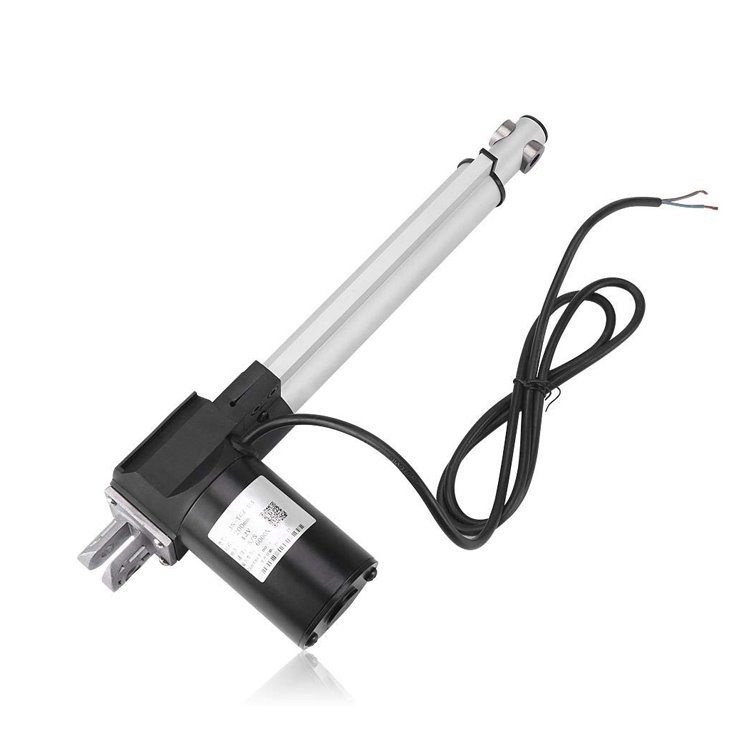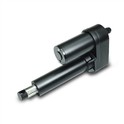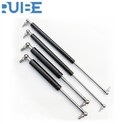As a supplier of 24V linear actuators, I've had my fair share of experiences dealing with these nifty devices. They're used in a whole bunch of applications, from Linear Actuator for Recliner Chair to Linear Actuator for Electric Sofa. Ensuring their smooth operation is crucial, not just for the end - users but also for us suppliers. So, let's dive into how you can make sure your 24V linear actuator runs like a well - oiled machine.
Proper Installation
The first step to a smoothly operating linear actuator is getting the installation right. It might sound obvious, but a lot of issues stem from improper installation. You need to mount the actuator securely. Loose mounts can cause vibrations, which not only make a racket but can also lead to premature wear and tear.
When mounting, make sure you're using the right hardware. Using sub - standard bolts or screws can lead to the actuator coming loose over time. Also, pay attention to the alignment. If the actuator isn't aligned properly with the load it's supposed to move, it'll have to work harder. This extra strain can reduce its lifespan and might even cause it to fail prematurely.
Power Supply
The 24V power supply is the lifeblood of your linear actuator. You've got to make sure it's stable. Fluctuations in voltage can mess with the actuator's performance. A voltage that's too low might not provide enough power for the actuator to move the load effectively, while a voltage that's too high can damage the internal components.
Use a high - quality power supply that's designed to handle the actuator's power requirements. If possible, invest in a power supply with built - in voltage regulation. This will help keep the voltage steady, even if there are minor fluctuations in the main power source. And don't forget to check the wiring. Loose or frayed wires can cause power interruptions, so make sure all the connections are tight and the wires are in good condition.
Load Management
Understanding the load capacity of your 24V linear actuator is crucial. Every actuator has a maximum load it can handle. Trying to move a load that's too heavy for the actuator is like asking a small car to tow a big truck. It's just not going to work well.
Before installing the actuator, calculate the load it'll be moving. This includes not just the weight of the object but also any additional forces that might be involved, like friction. If the load is close to the actuator's maximum capacity, consider using multiple actuators or upgrading to a more powerful model.
Overloading the actuator can cause it to overheat. When an actuator overheats, it can damage the motor and other internal components. So, always stay within the recommended load limits.
Maintenance
Regular maintenance is key to keeping your linear actuator running smoothly. Start by keeping it clean. Dust, dirt, and debris can get into the actuator and cause problems. Use a soft brush or compressed air to clean the exterior of the actuator regularly.
Lubrication is also important. Most linear actuators have moving parts that need to be lubricated to reduce friction. Check the manufacturer's guidelines for the right type of lubricant to use and how often to apply it. Too much lubricant can attract dirt, while too little can lead to increased wear.
Inspect the actuator for signs of wear and tear. Look for things like scratches on the shaft, worn - out gears, or damaged seals. Catching these issues early can save you from more serious problems down the line.
Environmental Conditions
The environment in which the actuator operates can have a big impact on its performance. If it's in a dirty or dusty environment, you might need to take extra precautions to keep it clean. You could use a protective cover to shield it from the elements.
Temperature is another factor. Extreme heat or cold can affect the actuator's performance. In very hot conditions, the actuator might overheat more easily, while in cold conditions, the lubricant might thicken, making it harder for the actuator to move. If possible, try to keep the actuator in an environment with a stable temperature.
Control System
If your 24V linear actuator is part of a larger control system, make sure the system is working properly. The control system is what tells the actuator when to move, how fast, and how far. A malfunctioning control system can cause the actuator to behave erratically.
Test the control system regularly to make sure it's sending the right signals to the actuator. Check for any error codes or warnings. If you're using a programmable control system, make sure the programming is correct. A simple programming error can lead to the actuator not working as expected.
Training and Education
If you're a business that uses linear actuators, make sure your employees are trained on how to use and maintain them. A well - trained operator is less likely to make mistakes that could damage the actuator. Provide training on proper installation, power supply management, load management, and maintenance procedures.
This training can also help your employees identify potential problems early. They'll be more likely to notice if something doesn't seem right with the actuator's performance and can take action before it's too late.


Troubleshooting
Even with all the precautions, problems can still occur. When they do, it's important to know how to troubleshoot. Start by checking the obvious things, like the power supply and the wiring. If the actuator isn't moving, make sure it's getting power.
If the actuator is making strange noises, it could be a sign of a mechanical problem. Check the gears, the shaft, and the bearings for any signs of damage. If you're not sure what the problem is, consult the manufacturer's troubleshooting guide or contact their technical support.
Upgrades and Replacements
As technology advances, there might be opportunities to upgrade your linear actuators. Newer models might offer better performance, longer lifespan, or additional features. Consider upgrading if your current actuators are starting to show their age or if you need to increase the load capacity.
When it's time to replace an actuator, make sure you choose the right one. Look for a model that's compatible with your existing system and can handle the load requirements.
In conclusion, ensuring the smooth operation of a 24V linear actuator requires a combination of proper installation, power supply management, load management, maintenance, and troubleshooting. By following these steps, you can extend the lifespan of your actuator and keep it performing at its best.
If you're in the market for a 24V Linear Actuator, we're here to help. Whether you need one for a recliner chair, an electric sofa, or any other application, we've got a wide range of high - quality actuators to choose from. Contact us to discuss your specific requirements and let's start a procurement conversation.
References
- Manufacturer's manuals for 24V linear actuators
- Industry standards for linear actuator operation and maintenance
- Technical articles on linear actuator technology






